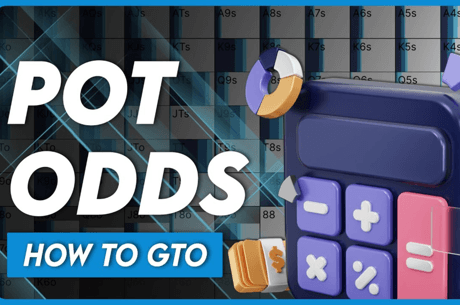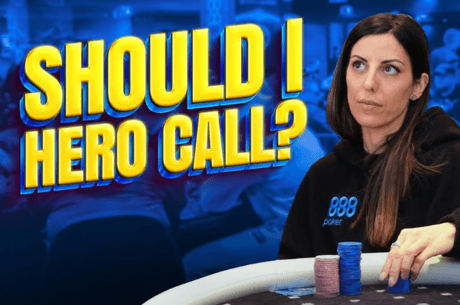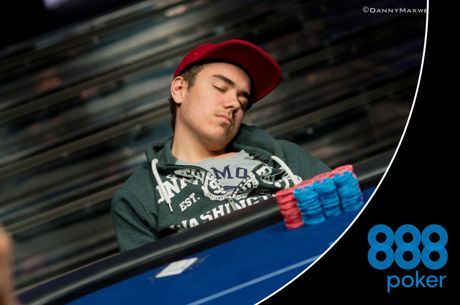H.O.R.S.E. Poker Strategy: In the Mix -- The Death of Table Selection

I play lots of fixed-limit poker. When I started playing poker, there was no such thing as a no-limit hold'em cash game. It simply didn't exist. Back then, fixed-limit games were king. It was around late 2003 when the first no-limit hold'em cash games started appearing in places like the Bicycle Casino in Southern California.
No-limit hold'em has become the invasive fish of the cash game world. With the combination of televised poker and the fortune and glory that await the winners of major tournaments, no-limit hold'em has all but wiped out the cash-game tables of its fixed-limit brethren. There are pockets where fixed-limit games hold on: Atlantic City, Los Angeles. But for most of the other small- and medium-sized casinos that have added a poker presence in the past five years, fixed-limit poker is an afterthought – if it's a thought at all.
Almost all mixed games are played fixed-limit. There are a few variations that are played pot-limit or even some mixture of betting styles, but by and large a mixed game is a fixed game. That often means that if you want to play a mixed game, you're stuck with whichever one table, whichever one rotation of games, and whichever one limit the poker room happens to be offering that night. Some places are better than others. Las Vegas, with its emphasis on appealing to the tourist crowd (who tend to be casual gamblers), is not one of the better places.
Consider the plight of fixed-limit hold'em in Las Vegas. For any game bigger than $4/8, there are only three places to go. The Mirage has a regular $10/20 game and a mostly-regular $20/40 game, with the very rare $40/80. Wynn sometimes has a $10/20 game. Bellagio has an $8/16 sometimes, a $15/30 almost always, a $30/60, and then bigger limits as there are players for them. It sounds like it's not the worst selection, until you realize that there is, at most, one or maybe two tables of each limit being spread at any one time.
Why do I bring this up? Just as it does for any form of poker, table selection for mixed-game cash games can go a long way toward determining the success or failure of a particular session. Not every poker table is created equal. Some are full of tight, leather-assed grinders who are going to fight over every nickel and are going to constantly put you to tough decisions. Others are wild and crazy, full of ram-and-jam players who are going to teach your bankroll some new lessons about the meaning of variance. And still others are full of loose-passive players, who will often put money in the pot so helplessly behind that it almost feels like thievery to take it.
Now if there's only one game going at your preferred limit, you have three basic choices: play a different limit, deal with it, or don't play. For most players, the first and third options aren't really options at all. They've already made the trek to the casino and they want to play some cards (dammit). Okay fine. In that situation, there's still a little something you can do to make a dud of a table as profitable as possible.
Seat selection is a lost art. I think this is partially because it's not really possible to seat-select on the internet. If you're playing online poker, there's no way to request a seat change button from the dealer. Oftentimes, a new seat is filled within seconds of the old player leaving the table, making it virtually impossible to quickly get up from the seat you're in and move to the new seat. In any event, changing seats at an online poker table really does require getting up from the table — thereby running the risk of losing your seat altogether.
In a brick-and-mortar casino, on the other hand, it is very easy to change seats. Most people change seats because they want to see a television better, or because they don't like sitting next to the dealer box, or for myriad other non-strategic reasons. Sometimes they think that the seat they are in is "unlucky" and that the cards will be better in a different seat. The most effective use of the seat change, however, is to get position on a player.
Position is a huge weapon in poker and the seat change is the way to bring it in your favor. Generally speaking, you want the tricky players on your right (so they act before you) and predictable players on your left (because their predictability partially negates their positional advantage). Is there a crazy maniac at your table who's playing seven out of ten hands every orbit and raising four of them? He'll become a real thorn in your side if he's on your left, since you'll never be sure how much it will cost to see a flop and since there's no real way to control him after the flop. On the other hand, if he's on your right, you'll be in position to make a few isolation three-bets and to take free cards when you need them after the flop.
Mixed games and fixed-limit poker are all about extracting as much value as you can, one bet at a time, when you have the best of it and minimizing losses, one bet at a time, when you have the worst of it. Just because you finally "got into the game" and took a seat at a table doesn't mean that you should focus only on the cards from that point forward. Changing your seat at the table relative to other players is a very simple, free method to help you maximize your potential profit for a session.








